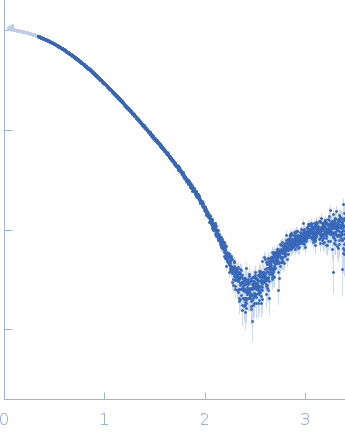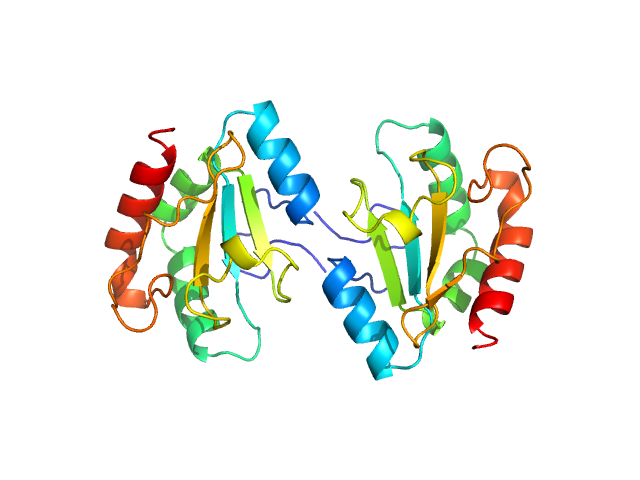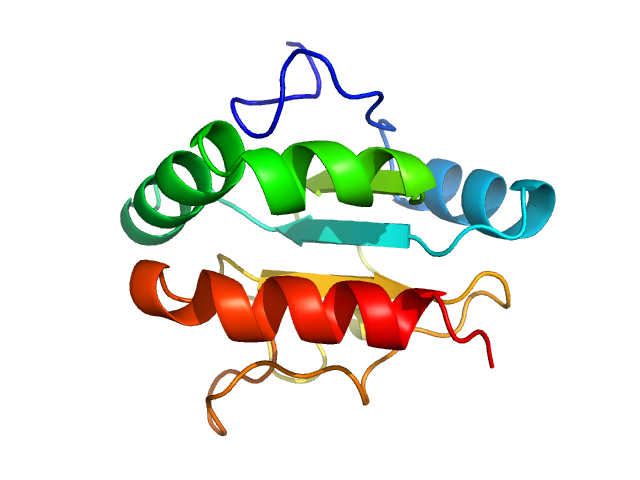|
Synchrotron SAXS data from solutions of anterior gradient protein 2 (AGR2) in 20 mM Tris pH7.4, 150 mM NaCl, 1% glycerol, 0.2 mM TCEP, were collected on the B21 beam line at the Diamond Light Source (Didcot, UK) using a Eiger 4M detector at a sample-detector distance of 3.7 m and at a wavelength of λ = 0.09464 nm (I(s) vs s, where s = 4πsinθ/λ, and 2θ is the scattering angle). In-line size-exclusion chromatography (SEC) SAS was employed. The SEC parameters were as follows: A 35.00 μl sample at 46 mg/ml was injected at a 0.06 ml/min flow rate onto a GE Superdex 75 Increase 3.2/300 column at 15°C. 30 successive 1 second frames were collected through the sample elution peak (from a total of 600 frames collected throughout the entire SEC run). The data were normalized to the intensity of the transmitted beam and radially averaged; the scattering of the solvent-blank was subtracted.
|
|
 s, nm-1
s, nm-1

